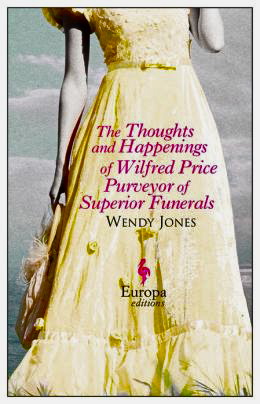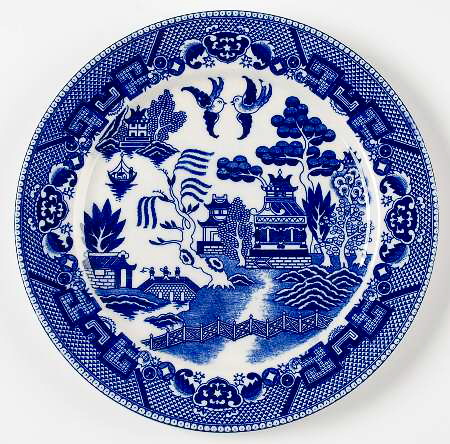“He wasn’t able to meet her eyes – he’d been gazing at her waistband when he’d inadvertently proposed [marriage] in a shame-faced way. It wasn’t that he had intended to get down on one knee – he hadn’t intended anything at all. What he had meant, if only he could have said it, was, ‘How do you get out of your dress?’ ”
 Already optioned for a miniseries by the producers of Downton Abbey, this novel has everything that will make this projected series a huge, popular success – a young, ingratiating main character who bumbles along as he tries to sort out his life; a woman to whom he becomes inadvertently engaged and who turns out to be a character worthy of great empathy; another woman who has still not recovered from her loss during World War I; and a Welsh setting in 1924 in Narberth, a small, rural town in Pembrokeshire in which everyone knows everyone else’s business. World War I is over, and the many young men from Narberth who were killed in the war have left behind broken hearts, ruined lives, and devastated families. Young men like Wilfred Price, who have not served in battle, have escaped many of the emotional horrors of the war, insulated from this reality because their professions have been considered essential to their communities.
Already optioned for a miniseries by the producers of Downton Abbey, this novel has everything that will make this projected series a huge, popular success – a young, ingratiating main character who bumbles along as he tries to sort out his life; a woman to whom he becomes inadvertently engaged and who turns out to be a character worthy of great empathy; another woman who has still not recovered from her loss during World War I; and a Welsh setting in 1924 in Narberth, a small, rural town in Pembrokeshire in which everyone knows everyone else’s business. World War I is over, and the many young men from Narberth who were killed in the war have left behind broken hearts, ruined lives, and devastated families. Young men like Wilfred Price, who have not served in battle, have escaped many of the emotional horrors of the war, insulated from this reality because their professions have been considered essential to their communities.
Wilfred, age twenty-seven, is a particularly conscientious funeral director who also makes the caskets and does all the work involved in a funeral and burial, and he is anxious to expand his business, perhaps by selling wallpaper in a front room of his establishment. His da is the local gravedigger. Wilfred is not looking for love when he sees Grace Reece, the daughter of the local physician at an afternoon picnic, but he is suddenly mesmerized by her dress (which, by the way, bears no resemblance to the gauzy picture on the book’s cover, except for its color). In 1924, the age of flappers, Grace’s dress is “the colour of lemon curd…[and made of] pleated silk, sleeveless, with a low waistband and a square neck that was slightly too low.” For Wilfred, “it was not only how she got into the dress that Wilfred wondered about. He wondered, too, how Grace got out of it.” Overcome with his fantasies, as Grace serves him a dessert, Wilfred hears himself asking her to marry him, a dramatic development which he recognizes instantly as a mistake, even as Grace is saying, “I would be delighted.” Escaping from this unexpected engagement proves to be far more difficult than he’s ever imagined. He ignores the problem, then tries to avoid it – and Grace – even as the community is speculating about their future, and as Wilfred finds himself attracted to someone else.

Dinner at Grace’s house is served on Blue Willow china. See photo credits for the story of the star-crossed lovers being pursued across the bridge on the plate, bottom left, above the fence.
As the action (or inaction by Wilfred) develops over the next few months, the novel becomes ironic and almost farcical in its complications, but though Wilfred sometimes seems far too innocent to be completely believable, his predicaments inspire empathy, not laughter. As he tries to avoid hurting anyone – Grace, her family, his new love, his da – he comes to realize, belatedly, that the responsibilities of adulthood come with obligations; what he needs to figure out is how to fulfill these obligations without causing pain to others. It never occurs to him that some of these people, recognizing that he is kindly and sensitive, can manipulate him to fulfill obligations which may not really be his own. As this comedy of manners of the “simple” life becomes ever more complicated, the characters are revealed as humans, not stereotypes, people living in the particular time and place which have shaped them. The reader comes to care for them all, even when their innocence severely challenges our twenty-first century cynicism.
As Wilfred, Grace, and Wilfred’s new love, try to work out their complicated lives while always being sensitive to the feelings of those around them, author Wendy Jones ultimately makes us admire, and sometimes wish for, the simplicity of life a hundred years ago. We care about the characters, and we wish for their happiness, perhaps because they remind us of our own dreams when we were their ages. However charming and sweet (I can think of no other word) this story may be, it is never saccharine or sentimental, and as Wilfred experiences a belated coming-of-age, the reader cheers his growth and imagines his future. Readers who yearn for an old-fashioned tale in which time seems to have stopped will cheer this novel which features fully developed characters who yearn for happiness and do what they can to achieve it within the limits of their society, a welcome respite from twenty-first century realities – and a story which will lend itself beautifully to a British mini-series centered on the life of a common man, instead of an aristocrat.
Photos, in order: The author’s photo accompanies her video interview here: http://www.youtube.com
The Blue Willow pattern includes a story of two lovers who are pursued by her murderous father. See the three tiny characters crossing the bridge in the bottom left of the plate, above the fence. The doves at the top are “their spirits, flying to the realms of eternal happiness.” http://www.replacements.com/
Pendine Sands, where Wilfred’s new love has a cottage, is where they meet occasionally as Wilfred tries to end his relationship with Grace. http://www.static-caravan.co.uk/davies_pendine.htm
ARC: Europa Editions


